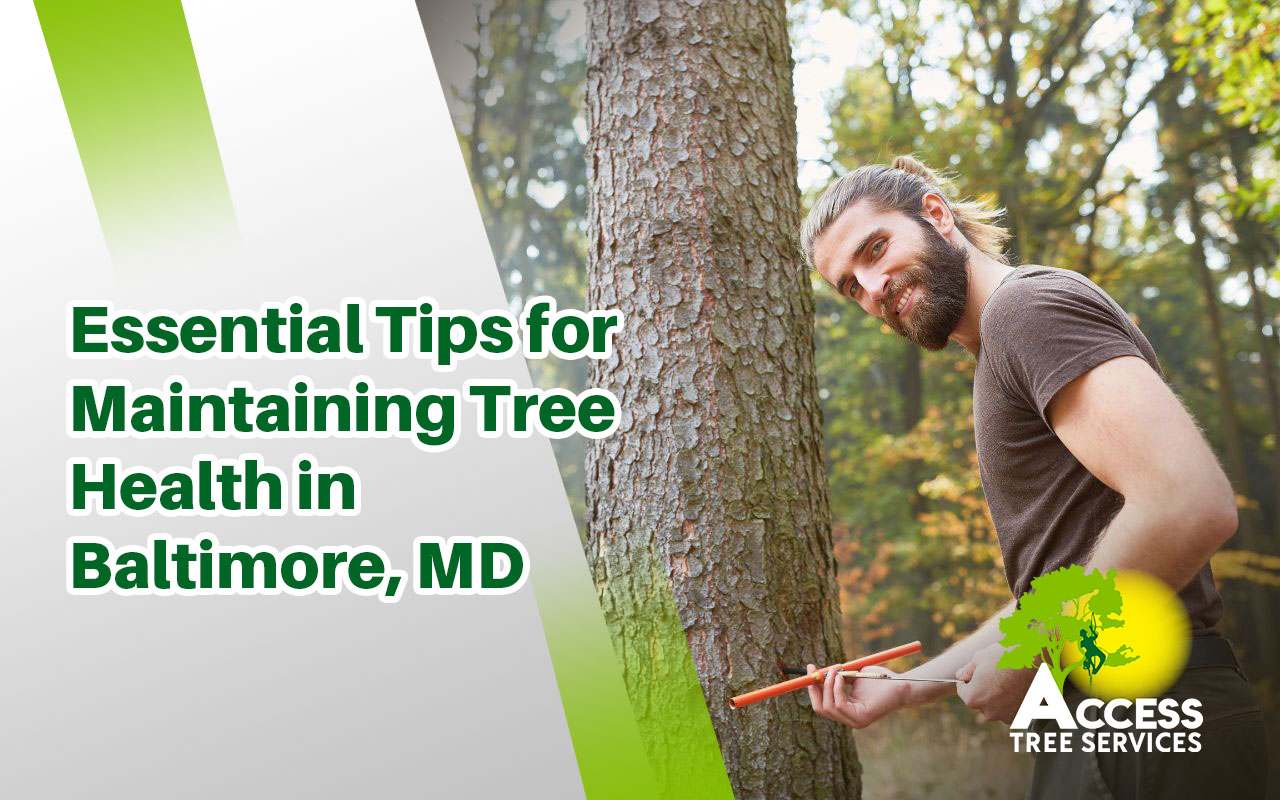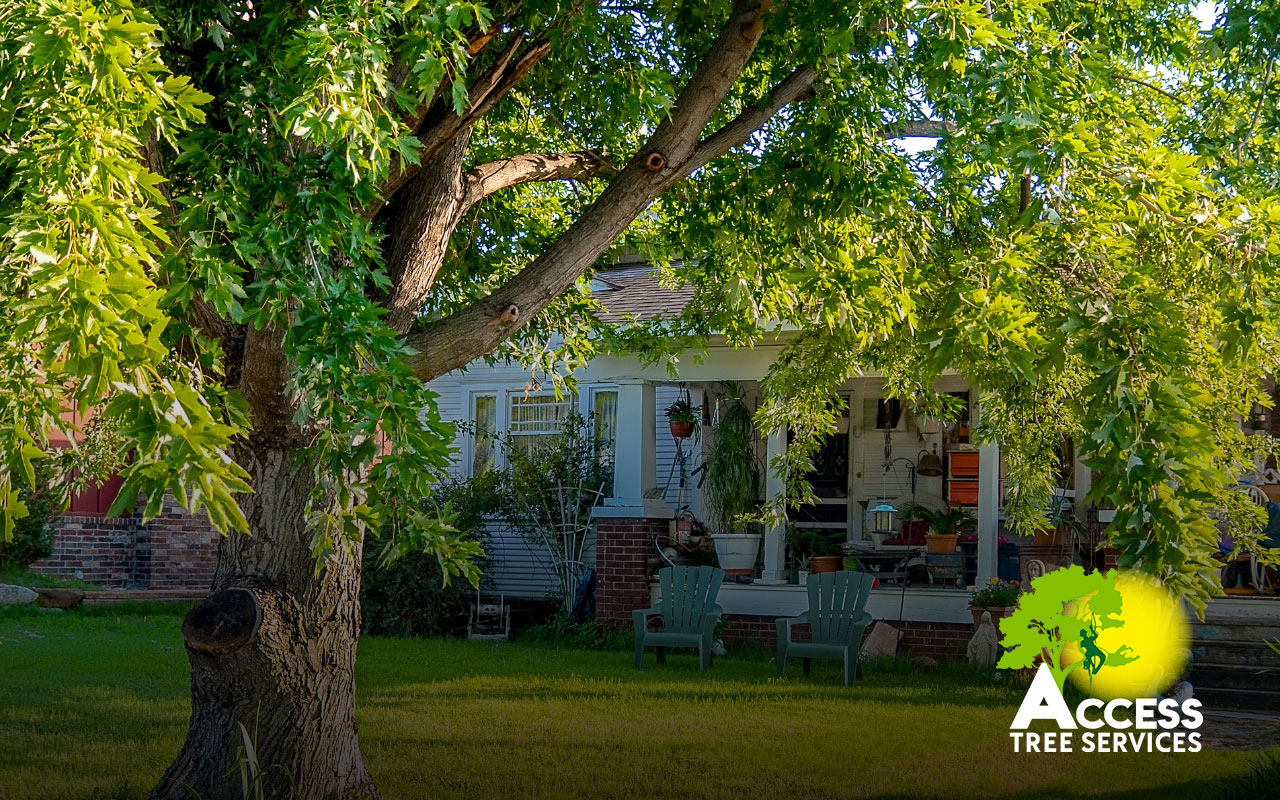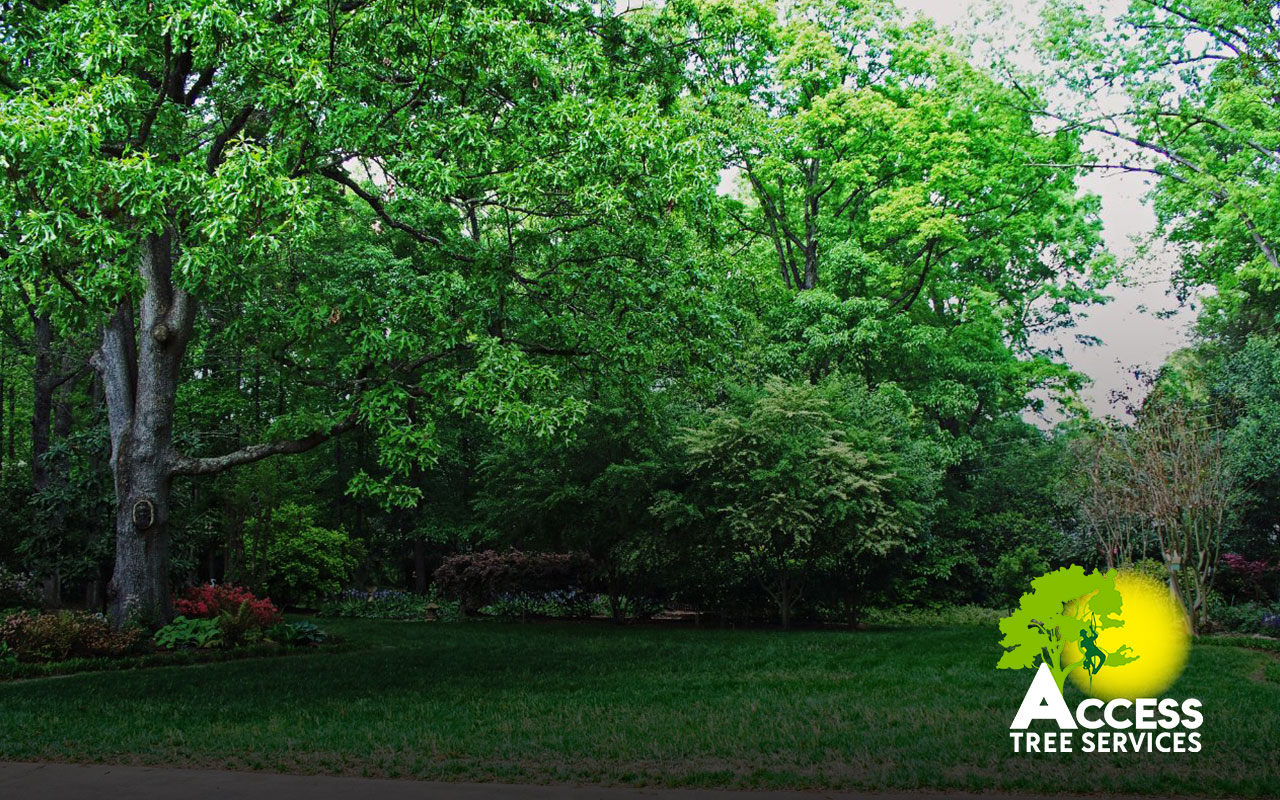
Trees are not only majestic and beautiful but also play a vital role in our environment. They provide shade, improve air quality, reduce noise pollution, and contribute to the overall well-being of our planet. However, maintaining tree health in optimal conditions requires proper care and attention.
This comprehensive guide will explore essential tips for promoting strong and vibrant trees. Whether you are a seasoned gardener or a tree enthusiast, this article will provide valuable insights to ensure the longevity and vitality of your trees.
1. The Importance of Tree Health
Maintaining the health of trees is crucial for their survival and overall well-being. Healthy trees are more resistant to diseases, pests, and environmental stresses. They also have a better chance of withstanding extreme weather conditions. Furthermore, trees contribute to the overall aesthetics and value of our surroundings. By investing in tree health, we can enjoy their numerous benefits for years to come.
2. Understanding Tree Anatomy and Growth Patterns

To effectively care for trees, it’s essential to understand their anatomy and growth patterns. Trees consist of various components, including roots, trunks, branches, leaves, and buds. Each part has a specific function and plays a crucial role in the tree’s overall health. By familiarizing yourself with the different parts of a tree, you can identify signs of distress and provide appropriate care.
3. Choosing the Right Tree for Your Environment
Selecting the right tree for your environment is vital for its long-term health. Consider factors such as climate, soil conditions, available space, and purpose when choosing a tree. Different tree species have specific requirements and adaptability to various environments. By selecting a tree that is well-suited to your location, you can enhance its chances of thriving.
4. Proper Tree Planting Techniques – Tree Health
Proper tree planting techniques are essential for establishing healthy trees. Follow these steps to ensure successful tree planting:
- Dig a hole that is wide and shallow, allowing the roots to spread out.
- Remove any grass or weeds from the planting area.
- Place the tree in the hole, ensuring the root collar is leveled with the ground.
- Backfill the hole with soil, gently firming it around the roots.
- Water the newly planted tree thoroughly.
- Apply a layer of mulch around the tree’s base to conserve moisture and suppress weeds.
5. Watering Strategies for Tree Health
Watering is crucial for maintaining tree health, especially during dry periods. Here are some watering strategies to keep in mind:
- Water deeply and infrequently to encourage deep root growth.
- Focus on the tree’s root zone, as this is where water absorption occurs.
- Use drip irrigation or a soaker hose to deliver water directly to the roots.
- Water early in the morning or late in the evening to minimize evaporation.
- Monitor soil moisture levels to avoid overwatering or underwatering.
6. Mulching for Tree Health
Mulching offers several benefits for tree health and maintenance. Here’s why you should mulch around your trees:
- Conserves soil moisture, reducing the need for frequent watering.
- Controls weed growth, preventing competition for nutrients and water.
- Insulates the soil, protecting roots from extreme temperatures.
- Improves soil fertility and structure as the mulch breaks down.
- Adds aesthetic appeal to your landscape.
Remember to apply mulch in a donut shape around the tree’s base, leaving a small gap around the trunk to prevent moisture-related issues.
7. Fertilization and Soil Management – Tree Health
Proper fertilization and soil management are crucial for tree health. Conduct a soil test to determine its nutrient content and pH level. Based on the results, you can choose the appropriate fertilizer to supplement any deficiencies. Organic fertilizers are often preferred as they promote long-term soil health and sustainability. Avoid over-fertilizing, as excessive nutrients can harm the tree and surrounding environment.
8. Pruning and Trimming Trees
Pruning and trimming are essential tree care practices that promote healthy growth and structural integrity. Here are some key points to remember:
- Prune dead, damaged, or diseased branches to prevent the spread of infection.
- Remove crossing or rubbing branches to prevent damage and promote better airflow.
- Maintain proper branch spacing to prevent overcrowding and ensure balanced growth.
- Prune during the tree’s dormant season to minimize stress and maximize recovery.
- Use proper pruning techniques and tools to avoid unnecessary harm to the tree.
Consult an arborist for complex pruning tasks or if you are unsure about the appropriate pruning methods for your tree species.
9. Preventing and Managing Tree Diseases
Tree diseases can significantly impact their health and vitality. Being proactive in preventing and managing diseases is crucial. Here are some preventive measures you can take:
- Choose disease-resistant tree species for planting.
- Provide adequate sunlight, airflow, and spacing between trees to minimize disease incidence.
- Regularly inspect trees for signs of diseases, such as discolored foliage, cankers, or fungal growth.
- Prune infected branches and dispose of them properly.
- Consult with a certified arborist or tree specialist for accurate disease diagnosis and treatment options.
10. Dealing with Pests and Insect Infestations
Pests and insect infestations can weaken trees and make them susceptible to diseases. Here are some tips for managing pests:
- Identify the specific pest or insect causing the damage.
- Use integrated pest management techniques to control the population.
- Consider natural predators or organic insecticides for pest control.
- Regularly monitor trees for signs of infestation.
- Maintain overall tree health to improve its ability to resist pest attacks.
11. Protecting Trees from Extreme Weather Conditions
Extreme weather conditions, such as storms, droughts, or frost, can pose significant threats to tree health. Here’s how you can protect your trees:
- Secure weak or overhanging branches to prevent storm damage.
- Provide supplemental watering during prolonged dry periods.
- Apply mulch to insulate roots from temperature extremes.
- Protect young trees from frost by covering them with fabric or burlap.
- Prune trees to reduce wind resistance and minimize storm damage.
12. Tree Health in Urban Environments
Trees in urban environments face unique challenges due to limited space, pollution, and soil compaction. To promote tree health in urban settings:
- Select tree species that are tolerant of urban conditions.
- Provide adequate soil volume and quality for root development.
- Implement tree-friendly construction practices to minimize damage.
- Regularly monitor and manage soil compaction.
- Consider supplemental watering and fertilization to compensate for environmental stressors.
13. Common Mistakes in Tree Care
Avoiding common mistakes in tree care is essential to ensure the long-term health and vitality of your trees. Here are some pitfalls to watch out for:
- Improper planting techniques, such as burying the root collar too deep.
- Over or under-watering trees.
- Using excessive amounts of fertilizer.
- Incorrect pruning practices, such as topping or excessive crown reduction.
- Neglecting regular tree inspections for signs of diseases or pests.
By being aware of these mistakes, you can make informed decisions and provide optimal care for your trees.
14. Baltimore’s Climate and Its Impact on Tree Health
Baltimore’s diverse climate brings unique challenges for maintaining tree health. Understanding how local weather patterns affect trees can help you provide the right care year-round. Here’s what to know about Baltimore’s seasons and their impact on your trees:
Winter: Protecting Trees from Frost and Wind
Winter in Baltimore can bring frost, cold temperatures, and occasional snow. These conditions stress trees, especially younger or newly planted ones. To help them withstand winter:
- Mulch Around the Base: A 2–4 inch layer of mulch insulates roots and helps retain moisture during cold spells. Leave a gap around the trunk to prevent rot.
- Watering During Drought: Baltimore winters sometimes bring periods of low precipitation. Water trees during these dry stretches to keep roots hydrated.
- Wrap Young Trees: Protect the bark of young or thin-barked trees by wrapping them with burlap or tree guards. This reduces damage from frost and hungry wildlife.
Spring: Encouraging Growth and Disease Prevention

With warming temperatures, spring is the ideal time for proactive tree care in Baltimore. This season promotes new growth but can also encourage the spread of diseases if not properly managed. Consider these tips:
- Prune Before New Growth: Remove any dead or diseased branches to allow for healthy new growth. Late winter or early spring pruning reduces the risk of infection and helps trees focus energy on new shoots.
- Inspect for Pests: As temperatures rise, pests like aphids, caterpillars, and beetles become more active. Check leaves and branches for signs of infestation.
- Fertilize Carefully: After testing your soil, apply a balanced fertilizer to boost soil nutrients. Organic fertilizers are beneficial as they promote healthy soil without harsh chemicals.
Summer: Managing Heat and Drought Stress
Baltimore summers can be hot and dry, posing risks of heat stress for trees. Providing adequate care during this period ensures trees stay strong through peak temperatures.
- Deep Watering: Water trees deeply and infrequently to encourage deep root growth. Focus watering efforts on the root zone rather than near the trunk.
- Adjust Mulch Layer: Refresh mulch around the base to conserve soil moisture and keep roots cool. Avoid piling mulch too high, which can trap moisture and invite pests.
- Look Out for Sunscald: Trees can get sunscald, especially younger trees with thin bark. Consider using tree wraps to shield vulnerable bark from intense sunlight.
Fall: Preparing Trees for Winter
In the fall, trees prepare to go dormant, making it the perfect time for preventative care. Baltimore’s mild autumns allow for various tasks that set trees up for success through the colder months.
- Remove Fallen Leaves: While leaf litter can provide nutrients, excessive piles around trees can harbor disease and pests. Clear leaves from around the base to maintain a healthy environment.
- Inspect for Disease and Pests: Before winter, check for any remaining signs of pests or fungal infections. Addressing these now can prevent issues from worsening over winter.
- Apply a Final Mulch Layer: A fresh layer of mulch can prepare your trees for winter, insulating roots from sudden temperature drops.
15. Frequently Asked Questions (FAQs)
Q1: How often should I water my trees?
A1: The frequency of watering depends on various factors, such as tree species, soil type, and weather conditions. As a general guideline, deeply water trees once or twice a week during dry periods.
Q2: Can I use regular garden soil for planting trees?
A2: It is recommended to use well-draining, loamy soil enriched with organic matter for tree planting. Regular garden soil may not provide the ideal conditions for root development.
Q3: When is the best time to prune trees?
A3: The best time to prune trees is during their dormant season, typically in late winter or early spring. Pruning during this time minimizes stress and allows for better healing.
Q4: How can I identify tree diseases?
A4: Look for symptoms such as leaf discoloration, cankers, lesions, or unusual growth patterns. Consulting a professional arborist can help accurately diagnose and treat tree diseases.
Q5: Should I remove all the dead branches from my tree?
A5: It is advisable to remove dead branches as they can become entry points for diseases and pests. However, consult an arborist for proper pruning techniques and recommendations.
Q6: How can I protect my trees during construction?
A6: Implement tree protection measures such as fencing off the root zone, avoiding soil compaction, and preventing damage to the trunk and branches. Consult an arborist for guidance.
16. Promote Thriving Trees: Your Guide to Tree Health Success
Maintaining the health of trees is vital for their longevity, beauty, and the benefits they provide to the environment. By implementing the essential tips outlined in this guide, you can promote strong and vibrant trees in your landscape. Remember to choose the right tree species, follow proper planting techniques, provide adequate water and nutrients, practice regular pruning and inspection, and address any diseases or pest issues promptly. With proper care and attention, your trees will thrive and continue to enhance the beauty of your surroundings for years to come.
